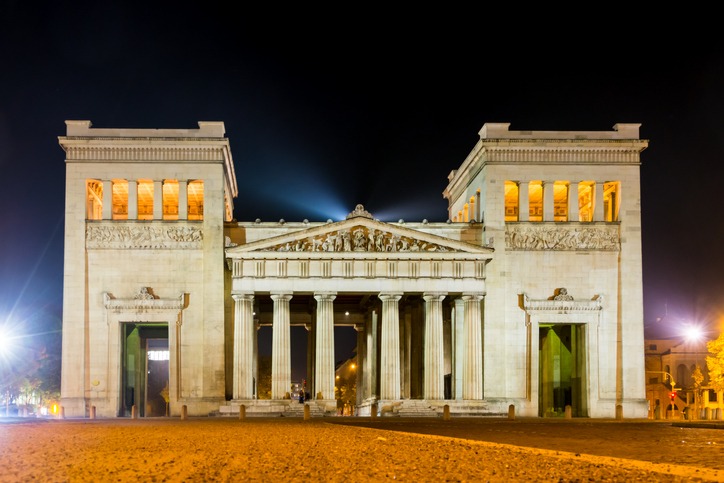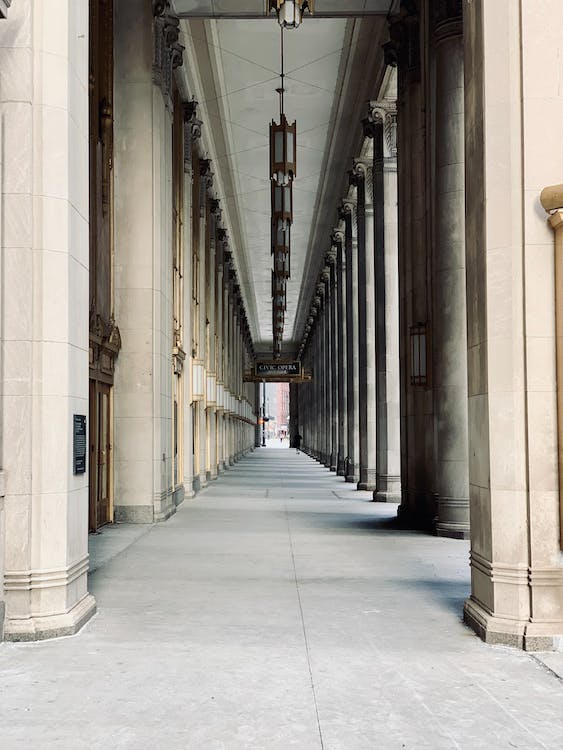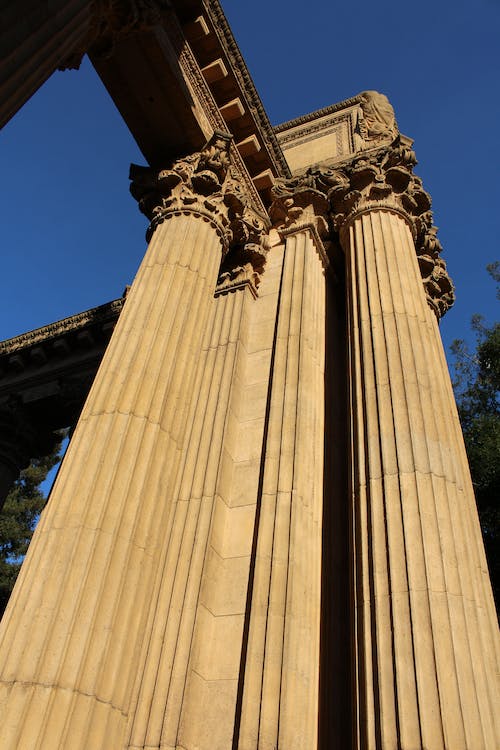Columns, the towering sculptural pillars, are not just structural elements but also potent symbols in architecture. They serve both functional and aesthetic purposes, bridging the gap between art and engineering. From the ancient ruins of Greece to the contemporary skyscrapers, columns have been central to architectural design, each telling a story of cultural identity, technological advancement, and artistic expression.
The Functional Significance
Columns are the backbone of architectural strength and stability, playing a crucial role in supporting and shaping buildings throughout history. Their functional significance is multifaceted, encompassing not only physical support but also influencing architectural design and spatial harmony.
Structural Support: At its core, the primary function of a column is to support weight. Columns bear the load of the structure above them, such as the roof or upper floors, and transfer this weight down to the building’s foundation. This load-bearing capacity is critical in large structures like temples, palaces, or modern skyscrapers, where the even distribution of weight is essential to the integrity of the building. The strength and durability of columns, especially in monumental architecture, have enabled buildings to withstand the test of time, resisting natural elements and the wear of centuries.
Determining Architectural Form: Columns play a significant role in determining the form and layout of a building. They are often used to define the boundaries of a space, such as in a colonnade surrounding a courtyard or a series of pillars marking a hallway. By doing so, columns help in organizing space, guiding movement, and creating visual pathways in architecture. Their placement can create symmetry or asymmetry, influence the flow of natural light, and even affect the acoustic properties of a space.
Enhancing Structural Flexibility: The use of columns allows for greater flexibility in architectural design. By providing support at specific points, columns enable the creation of large open spaces without the need for solid, load-bearing walls. This architectural freedom is evident in structures ranging from ancient Greek temples, with their open columned porticos, to modern exhibition halls and airports, where vast, column-supported spaces are free from internal obstructions.
Seismic Resistance: In regions prone to earthquakes, columns are engineered to provide seismic resistance. They are designed to absorb and dissipate the energy from seismic waves, helping to prevent collapse during an earthquake. This aspect of column design is a critical consideration in modern architecture, where the safety and resilience of structures are paramount.
Contributing to Thermal Efficiency: In some architectural designs, columns can contribute to a building’s thermal efficiency. They can be strategically placed to provide shade, reducing heat gain in warmer climates, or arranged to allow maximum sunlight penetration in colder regions. This functional aspect of columns intersects with sustainable design principles, where the goal is to minimize energy consumption while maximizing comfort.
The functional significance of columns in architecture extends far beyond their role as mere support structures. They are pivotal in determining the form, function, and sustainability of a building. As architectural techniques and materials have evolved, so have the capabilities of columns, allowing architects to push the boundaries of design and create structures that are as efficient and resilient as they are aesthetically pleasing.
Aesthetic and Symbolic Role
Columns have always played a pivotal role in the aesthetic and symbolic narrative of architectural design. Beyond their structural functionality, they embody the artistic expressions and cultural values of their times.
- Architectural Aesthetics: Columns are key in defining the architectural style and aesthetic appeal of a building. Their proportions, detailing, and placement can transform a structure’s appearance, lending elegance, grandeur, or solemnity. In classical architecture, the ornate details of Corinthian columns added opulence, while the sturdy simplicity of Doric columns conveyed a sense of strength and durability.
- Cultural Symbolism: Throughout history, columns have carried significant cultural and symbolic meanings. In ancient Greece, columns were seen as representations of the gods and the virtues of democracy. In Roman times, they symbolized power and imperial grandeur. In modern memorials and institutions, columns often stand for stability, order, and permanence.
- Iconic Landmarks: Many of the world’s iconic landmarks employ columns in a way that contributes to their symbolic significance. For instance, the columns of the Parthenon in Athens are emblematic of ancient Greek civilization, while the colonnades of the Lincoln Memorial in Washington, D.C., symbolize unity and national strength.
Different Styles and Orders
Columns have evolved through various architectural styles and orders, each with its distinct characteristics and historical context.
- Classical Orders: The three classical Greek orders – Doric, Ionic, and Corinthian – laid the foundational styles for columns. The Romans later added the Tuscan and Composite orders. Each order has specific proportions, decorations, and symbolic associations, influencing architectural designs for centuries.
- Regional Variations: Different regions and cultures have adapted and interpreted column designs in unique ways. For example, the elaborate Mughal columns in India, the slender wooden columns in traditional Japanese architecture, and the massive stone columns in Egyptian temples reflect diverse aesthetic values and construction techniques.
- Evolution Over Centuries: Over the centuries, these styles have been adapted and reinterpreted, from the ornate columns of the Baroque period to the stripped-down forms of modernist architecture. Each era has added its chapter to the story of column design, reflecting the evolving tastes and technologies of the times.
Modern Interpretations
In contemporary architecture, columns have transcended traditional forms and functions, embodying modern construction techniques and aesthetic concepts.
- Innovative Materials and Forms: Modern columns are not restricted to classical shapes or materials. Architects now use steel, concrete, and even composite materials to create columns that are both structurally sound and visually striking. These materials allow for greater flexibility in design, enabling architects to create more diverse and dynamic forms.
- Functional Versatility: Modern columns can serve multiple purposes – from supporting solar panels to housing ventilation systems. Some contemporary designs integrate columns into the environmental control systems of buildings, contributing to sustainability and energy efficiency.
- Aesthetic Diversity: In modern architecture, columns are often used to make a visual statement. From minimalist designs that emphasize clean lines and simplicity to sculptural columns that serve as focal points of artistic expression, modern columns are diverse in their aesthetic appeal.
Additional Information
- Learn about the Three Types of Greek Columns
- Also, check out here if you need Diamond Painting Personalisiert expert professionals.
- Related Post: Decorative Signs for Your Home
Conclusion
Columns in architecture are more than just structural necessities; they are the embodiment of a building’s character and the bearers of its historical and cultural narratives. From ancient temples to modern skyscrapers, columns have stood the test of time, evolving yet retaining their significance as fundamental elements in architecture. They remind us that architecture is an art form that lives and breathes through its structures, continuously shaping and being shaped by the human experience. The aesthetic, symbolic, and functional roles of columns in architecture have continuously evolved, reflecting the artistic, cultural, and technological advancements of each era. From ancient stone pillars to modern steel beams, columns have been an integral part of architectural design, embodying the spirit of the times and the visions of their creators.




